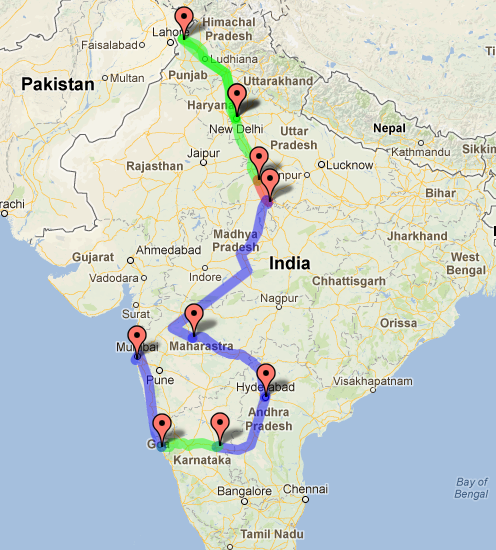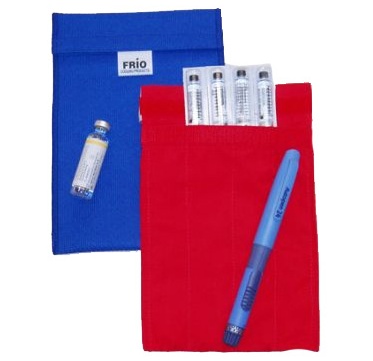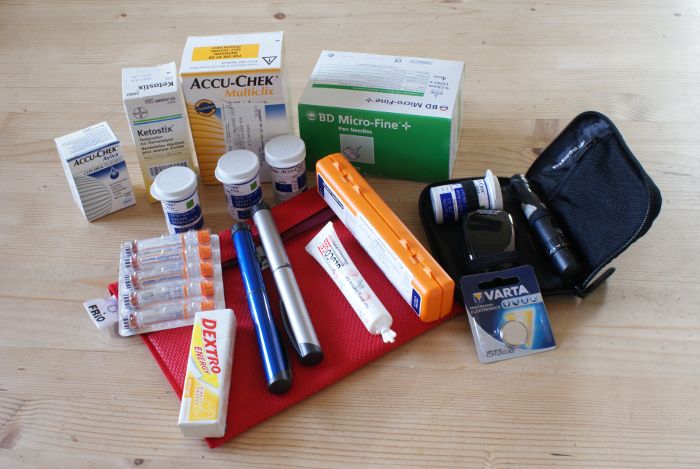Rung five – (un)official pump demo – Animas Vibe
We went to yesterday’s JDRF Discovery Day in Bristol not just to listen to their talks but also to meet up with lots of people from the online Twitter community for diabetes, affectionately know as the #DOC. One of them, Annie, is a huge advocate for Animas pumps in general and especially of their latest offering the ‘Vibe’ which her daughter has been using for a few months.
*Stop Press: Because Annie is such an advocate of Animas, I propose they are renamed Anniemas for the rest of this article.
What’s in a name?
(If you’re a kid reading this please skip this section.)
Vibe! Vibe!? Why on earth!
This was either a very clever marketing ploy or people in Anniemas’s* Department of Pump Naming lead very sheltered lives and need to get out more.
Amy’s 15 year old sister Emilia has already told Amy she can’t have one of these pumps due to the name and even at 12 Amy knows what it means. At lunch yesterday I got a giggle out of Emilia yesterday by telling her that Paul sat opposite had a black Vibe in his pocket.
If Amy gets one of these I’m going to have to tippex out the name on front, either that or smirk every day I see it, for four years – that’s a lot of smirking.
Dear Anniemas*, for the record please do not call your next pump The Rabbit.
First, the Anniemas* 2020
Annie’s daughter has just recently got the Anniemas Vibe pump and when you change pumps you get to keep your old one, which in this case was the Anniemas* 2020.
The 2020 is very similar to the Vibe, a little smaller in length due to the extra bits the Vibe needs to incorporate CGM (continuous glucose monitoring).
Armed with some old insulin Annie showed me how easy it is to full the pump reservoir from a Humalog 10ml vial, although to be honest I was all fingers and thumbs as this was the first time I’d tried anything like this.
Once the reservoir was filled Annie effortlessly primed the pump quicker than I could ask ‘Annie, how do you prime the pump?…oh, you’ve done it”. 🙂
The Inset II infusion set
Annie passed me one of Anniemas’s infusion sets, the Inset II, which comes in three colours, this one being white. Some people say the pink ones hurt less; I think that may be a myth.
Anniemas’s* infusion sets are self contained, everything you need to do a set change is contained in the set itself: there’s no need for you to carry any set insertion device like you do for the Accu-chek Combo.
These infusion sets fit any pump whose reservoir has a Leur lock at the top, so they can be used on Anniemas*, Roche and Medtronic pumps. I found this out from another Twitter user who used to use an Anniemas* 2020, moved to a Roche Accu-chek Combo but didn’t like their infusion sets so uses Anniemas* ones instead.
Annie talked me through preparing the set for insertion. I said “you do know I’m not going to put this on myself don’t you?”. She just smiled.
Once the set was prepared I re-iterated I didn’t want to insert it on myself – now though I wish I had – so Annie took it, pulled up her sleeve and inserted it into her upper arm. She didn’t flinch. I’ve only found out since that she’d never done this before in her arm and didn’t know whether it would hurt. She says it didn’t, I’m glad.
Bolusing and calculating carbs
Bolusing on any pump is a relatively straightforward affair and the Anniemas* is no different than most. It does have an audio bolus option which is designed to allow you to bolus without looking at your pump. As Paul – who runs GBDOC web site and tweetchats – said, you press then button and it beeps allowing you to count the units, meaning that a hidden pump does not have to be accessed. Don’t be confused though, this is not a rival for the covert bolusing offered by the Accu-check Combo.
Amy and I played with the insulin-filled 2020 and within seconds she was bolusing, dripping insulin all over my fingers – the little tyke! (ha ha). We played with all the other functions and it made Amy realise that a transition to this pump wouldn’t actually be a problem.
Food list
Annie hasn’t really set this up on the new pump but the Vibe has a food list. It’s a list of up to 500 foods and their carb values and could serve a limited use, although with mobile phones these days and MyFitnessPal – other apps are available! – it’s hard to see it being used a great deal. Ironically, for a pump which is regulated in the UK (but not the US) for CGM use, the food list is not populated in models outside of the US. So UK users need to create their own food list, from scratch.
Having said all this it could come in useful as Amy is due to go to Europe on a school trip a few weeks after (hopefully) getting her pump. We could therefore pre-load a Vibe with a list of common foods indigenous to where she’s staying. This would be useful as she’ll not have an internet connection on her phone whilst there.
It’s waterproof
Yeah, yeah, it’s waterproof, it’s got an IPX8 rating just like the Accu-chek Combo has. So why then do Roche tell you to try not to get the Accu-chek Combo wet, whereas Anniemas* actively encourage an occasional dunk.
A friend Laura told me last week that a mutual #DOC friend was at the Anniemas* stand at this year’s HPC13 conference and their rep told her to dunk her Vibe in a pint glass of water and leave it there. They’re obviously pretty confident about their IPX8 rating. (IXP8 means ‘Protected against water submersion – The equipment is suitable for continual submersion in water under conditions which are identified by the manufacturer. ‘.)
For info Medtronic’s Paradigm Veo pump is rated as IPX7 (Protected against water immersion – Immersion for 30 minutes at a depth of 1 meter).
Ergonomically easier to sleep with
Paul made a very valid point (I’d not thought of) when he showed us the back of the Vibe. It’s curved. This, he said, made it much nicer to wear against a curved part of your skin. He also said that as he’s got to carry or wear his constantly for the next 4 years it makes sense to pick a pump based on weight/size/design. It’s a very valid point (yet again).

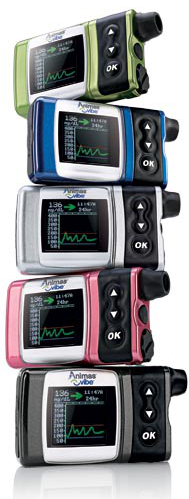 Animas Vibe pumps
Animas Vibe pumps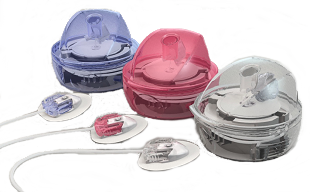 Animas Inset II infusion sets in multiple colours
Animas Inset II infusion sets in multiple colours